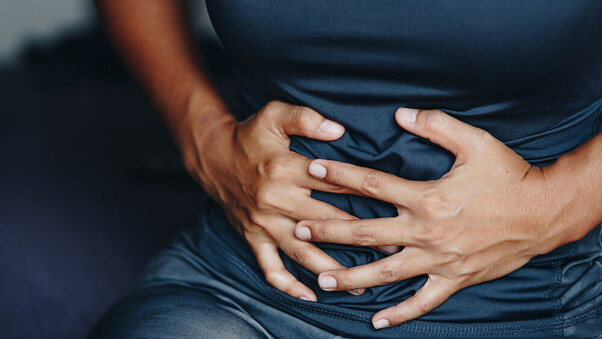Endometriosis (from here on in, let’s call it Endo because nicknames are the Australian way!) is a term you might hear thrown around a lot in the month of March.
That’s because March is Endometriosis Awareness Month. But what is the nitty-gritty of this super common condition that affects 1-in-10 Aussie women and is currently incurable? Why is it so damn hard to get a diagnosis? And why can two women, both with Endo, have such different symptoms?
Well, strap yourself in my friend, you’re about to embark on a journey to clear up some of the confusion on this equally hard to pronounce and hard to understand condition.
WHAT IS ENDOMETRIOSIS?
So where to begin? Well, they say the beginning is the best play to start, so I guess that leads us to…Endometrium!
The endometrium is the blood/membrane tissue that lines the uterus. When we have a period, this is our body clearing out the old endometrium so we can grow back a fresh new layer the following month.
When the Endometrium stays in its allocated seat (e.g. inside the uterus)—no problems! However, when it goes a bit rogue and starts growing places it should not (i.e. outside of the uterus) this becomes a recipe for Endo.
SYMPTOMS AND WHY THEY MATTER
So now we know what Endo is, why are the symptoms between two women so massively different?
Well, the simple answer is: Endo is a mischievous creature and can get up to mischief in many different parts of the pelvis/abdomen. Absolutely everyone with Endo has their own unique case and needs to manage it differently.
Enter the first of the many common phrases associated with Endo: “Everyone is different”.
Below is a list of Endo symptoms. Just so you are aware, however, Endo is creative and can cause a woman to go through many other more unusual symptoms than this.
This list is not a diagnostic tool, just here for you to consider—“Do I have a few of these? Does my sister’s neighbour’s cousin have a few of these?”…you get the picture.
| Generalised Endometriosis Symptoms Regardless of Effected Area |
|---|
| Painful periods (we’ll get to that in a minute) Long periods. Heavy periods. Spotting between periods. Short cycles. Pain during/after sex. Nausea/Fatigue/ Hormonal Imbalance/other systemic symptoms. “Tightness” in the vagina e.g. unable to insert a tampon/finger. Difficulty falling pregnant. Food sensitivities. Referred pain to the deep abdomen, low back, upper thighs. Neural pain in the pelvis. |
| Bladder Region | Ovary/Fallopian Tube Region | Bowel Region |
|---|---|---|
| Pain in the front of the lower abdomen. Pain with urination Hard to initiate urination Pain with full bladder Bladder leakage Bladder urgency Changes to bladder control around period | Pain on ovulation. Pain in deep pelvis/abdomen. Ovulation bleeding. | Pain passing bowel motions. Diarrhoea/ Constipation. Pain when feeling a “full bowel”, prior to emptying. “Pencil poos” e.g. passing bowel motions that have a very narrow circumference. Constant bloating. |
Painful periods AKA the absolute bugbear of people with Endo everywhere
Been told “it’s normal to have period pain, all people with uteruses do?”
Well, I’m here to tell you: “All people with uteruses DO NOT have pain like people with Endo do.”
Light cramping in the lower abdomen the day before/on days 2-3? Normal.
Unable to go to school/work? Absolutely not!
Need pain killers to function? Absolutely not!
Having nausea or vomiting due to pain severity? Absolutely not!
Unable to go to social events or leave the house? Absolutely not!
Bleeding through a pad or tampon every two hours and passing clots larger than an inch on the regular? Absolutely not!
HOW DO YOU DIAGNOSE ENDOMETRIOSIS?
The truth is that Endo is a tricky thing to diagnose and the only way to definitively know is to have laparoscopic surgery (where a surgeon uses a couple of small openings in your stomach to have a look around and if they find anything suspicious, remove it). In saying that, not everyone with suspected Endo needs surgery.
Sometimes doctors prescribe treatments to help with symptoms on a suspicion of Endo, if those treatments resolve the symptoms, then you don’t necessarily need surgery at that time. As well as this we have doctors in Canberra using transvaginal ultrasound to assist in diagnosis.
Luckily, you can look forward to an easier path in the future. Coming soon: a saliva or blood test for diagnosis. Scientists are working round the clock to get this up and running.
Current treatments for Endo involve hormonal therapies (e.g. a Mirena or pill), diet and lifestyle changes, surgery to excise (remove) the Endo, pelvic floor physio to assist with pain and muscle symptoms, as well as some alternative therapies which can be helpful e.g. acupuncture and herbal/supplement therapy. Again, “Everyone is different”.
What I would also like to stress is that Endo is not an automatic infertility sentence. There are many women with Endo who become pregnant with absolutely no outside assistance, some with a little medical help, some have no issues following an Endo excision surgery, and it’s
Researchers have found Endo documented in Ancient Egyptian records (because some exceptionally clever people can translate hieroglyphics to: “We did an autopsy and found Endo in this woman”), but despite us knowing of it for thousands of years across many different races of people “We just don’t bloody know!!!!” remains such a common answer to all our Endo questions.
The good news is, we are now living in the era where Endo is becoming more publicly known, scientifically researched and medically treated with greater success.
Stay tuned friends—times are changing, and I so hope our further study leads to women with Endo having a much better quality of life—soon.
Thinking of you all this March,
